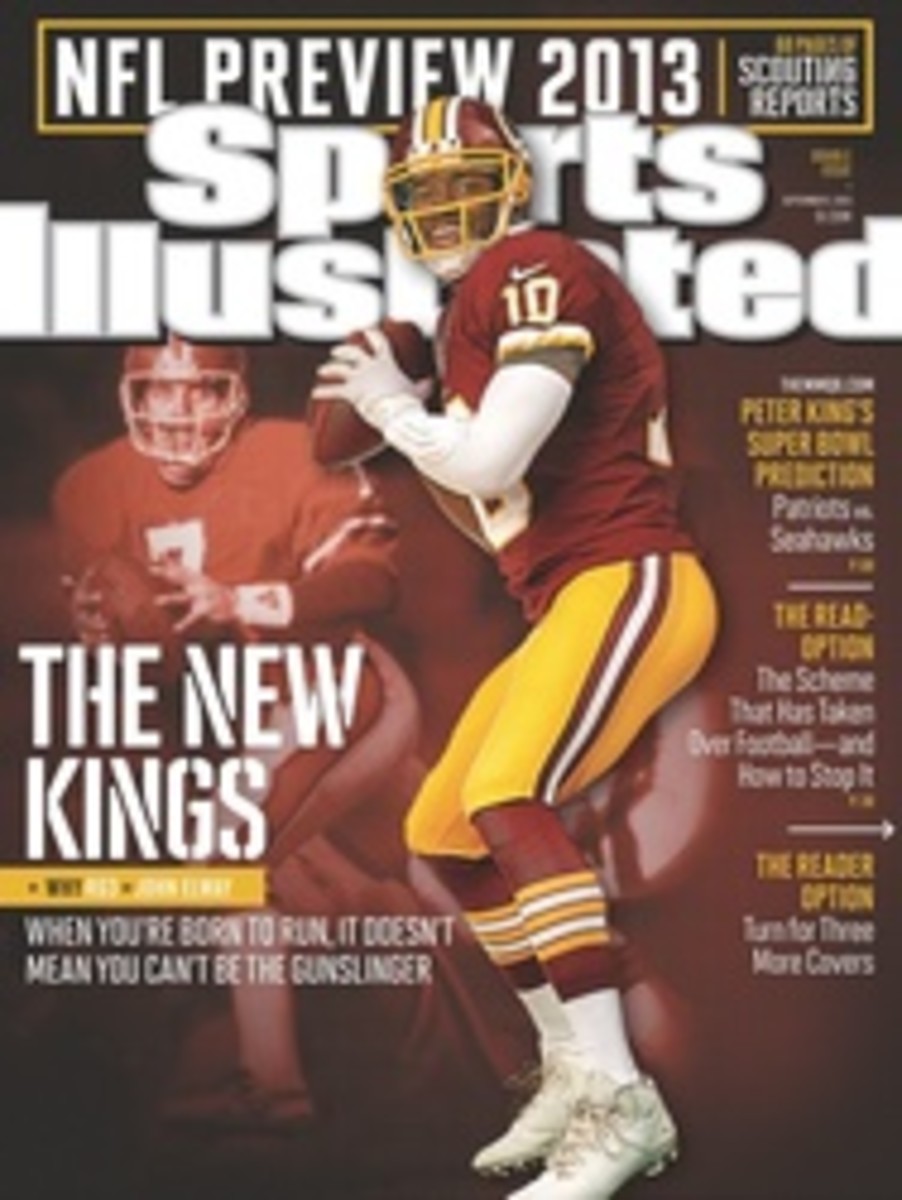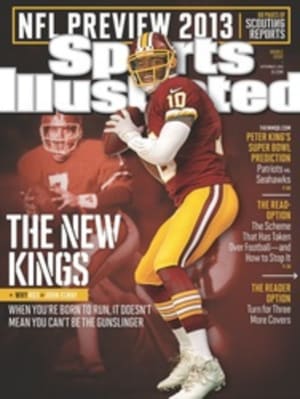
14 Arizona CARDINALS
ONE DAY before practice in July, 6' 8", 300-pound defensive end Calais Campbell sat in front of his locker at University of Phoenix Stadium and attempted to explain, with diplomacy, how demoralizing last season had been. The defense gave up two or fewer touchdowns in 12 games, yet Arizona finished 5--11. It's no secret that the source of the team's problems was a lack of quarterback production. The Cardinals started four different passers—John Skelton, Kevin Kolb, Ryan Lindley and Brian Hoyer—who combined over the final 12 games to throw 18 picks and only four TDs. Campbell paused. Then he punted. "That's football," he said. "It's just the way it is."
But his teammates were having none of it. "Bulls---," one coughed into his hand. "Tell the truth!" shouted another.
Fact is, the situation was terribly demoralizing. For the defenders. For the coaches, nearly all of whom were fired after the season. And for the receivers, who probably wouldn't have done much worse if they had been throwing the ball themselves.
At the very least, the new quarterback comes with a pedigree. The signing of Carson Palmer to a three-year, $26 million free-agent deal with Arizona last April gives the team its best option at the position since Kurt Warner retired after the 2009 season. "We've got the guy to get us the ball now," says wideout Andre Roberts with a smile.
Palmer, 33, is the perfect fit for new coach Bruce Arians's aggressive passing game. He not only has the size (6' 5", 235 pounds), but he also has the arm strength and the intelligence to read defenses and create the "chunk" opportunities (completions that go for at least 20 yards) that Arians, the former Colts offensive coordinator desires.
In each of his past four seasons as a play-caller, Arians's offenses—first with Pittsburgh and then with Indy—ranked 10th or higher in completions of 20 yards or longer. Three times they finished in the top three. He expects the trend to continue in 2013, given the pairing of Palmer with a receiving corps that includes Larry Fitzgerald, promising second-year pro Michael Floyd and the quietly effective Roberts, who has strong hands and runs precise routes.
The offensive line—a priority given Palmer's lack of mobility—is no longer the disaster it was last year, when it allowed a league-worst 58 sacks. Left tackle Levi Brown, who missed all of 2012 with a torn triceps, is back. And on the right side, 6' 7", 302-pound free-agent tackle Eric Winston, who has started every game since the beginning of the '07 season (first with the Texans, then last year with the Chiefs), appears ready to take over.
Arians doesn't believe in allowing defenses to dictate game tempo or offensive opportunities. He repeatedly tells his quarterbacks and receivers that three can't cover two. "To keep the game simple, we play a lot of three-on-two football," he says. "If a team doubles one receiver, the other one has to win. If you're singled, you're the winner."
"He wants at least six explosive plays a game, especially from [the receivers]," Roberts says.
Arians likes to push players out of their comfort zones. Instead of installing the offense piece by piece, he threw everything at Palmer at once. Instead of discussing concepts in detail, he gave him a few highlights and told him to figure out the rest on his own.
The coach is also requiring that his receivers learn each of the three wideout positions—a mandate that made Fitzgerald skeptical at first. He had, after all, experienced most of his success lining up at split end—on the open side of the formation, away from the heavy traffic. But Arians told Fitzgerald he was going to catch 100 passes in 2013 only if he worked the middle of the field as well. "I played all three spots in the past, but the difference is they would give me five to 10 plays that we wanted to run from the other spots," Fitzgerald says. "I didn't have to know all the plays for the other positions; I just knew what I had to do on a particular play."
If Arians has made life more difficult for Fitzgerald—whose four touchdowns last year were a career low—Palmer makes it easier.
THE CASE FOR...
Free safety Tyrann Mathieu
As strong as this defense was for the majority of the 2012 season, that performance was overshadowed by the struggles of an offense that finished dead last in yards by a desert mile. Now the offense is improved, and the defense will continue to hum under new coordinator Todd Bowles, whose switch to a one-gap, 3--4 scheme means less reading and (hopefully) more penetrating by linemen. Previously, NT Dan Williams had to gauge which way an opponent's center was moving and react accordingly. "Now I just go," he says with a look that says, This is a good thing. Then there's the addition of the rookie Mathieu, a former LSU star who displays the football acumen and instincts of someone much older. He has the athleticism to play center field and the tenacity and agility to line up in the slot. And the nose for the ball that brought him college fame is still there. "He's ahead of most rookies in terms of understanding concepts and schemes, what he has to do to be successful," says DE Calais Campbell. "He's a natural ball hawk who knows where to be at the right time."
SINCE YOU'VE BEEN GONE
(N) NEW ACQUISITION
PHOTO
JONATHAN DANIEL/GETTY IMAGES
QB CARSON PALMER
PHOTO
GARY A. VASQUEZ/USA TODAY SPORTS

